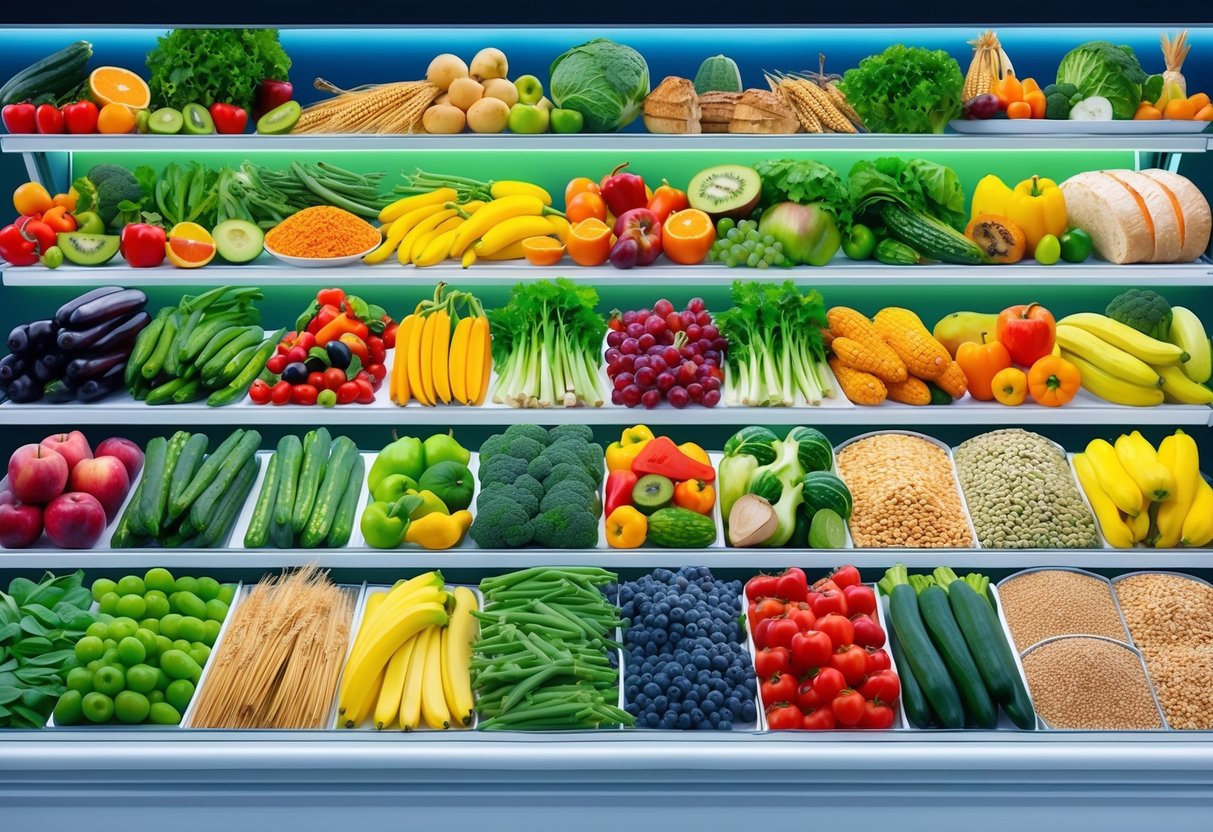
Nourishing Plant-Based Options
Plant-based staples like beans, legumes, nuts, and seeds are packed with nutrients, fiber, and healthy fats. They can enhance the nutritional profile of meals while supporting heart health and digestion.
Benefits of Beans and Legumes
Beans and legumes such as lentils, chickpeas, black beans, and peas are excellent sources of plant-based protein and complex carbohydrates. They provide soluble and insoluble fiber, which aids in digestive regularity and helps maintain steady blood sugar levels.
Eating a variety of beans and legumes may also support heart health due to their low saturated fat content and ability to help manage cholesterol. Many nutrition experts recommend including these foods in meals several times a week for their micronutrients, like folate, potassium, and iron.
For those interested in affordable, filling, and nutrient-dense options, beans and legumes are ideal because they are shelf-stable and can be used in soups, salads, grain bowls, and spreads. A comprehensive plant-based diet grocery list highlights beans, lentils, and peas as foundational foods.
Adding Nuts and Seeds
Nuts and seeds, including almonds, walnuts, chia seeds, and flaxseeds, are valuable for any balanced plant-based diet. They are rich in fiber, plant-based protein, and unsaturated fats, especially omega-3 fatty acids.
Regular intake of these foods may help support cardiovascular wellness and brain function. Incorporate an assortment of nuts and seeds into daily snacks, oatmeal, vegetable dishes, and smoothies for extra crunch and nutrition.
For optimal nutritionally balanced meals, select unsalted and unroasted varieties. As featured on lists of whole food essentials, nuts and seeds offer versatility and significant nutrient density.
Smart Dairy and Dairy Alternatives
Dairy and its alternatives can be an excellent source of protein, calcium, and other important nutrients. Making careful choices about fat content and added sugars makes it easier to get the benefits without consuming unnecessary calories.
Selecting Low-Fat Dairy
Low-fat dairy options, such as skim or 1% milk, Greek yogurt, and cottage cheese, deliver rich protein and calcium with less saturated fat. These choices support strong bones and muscle recovery while managing calorie and dietary fat intake.
Cheeses like mozzarella, feta, and reduced-fat cheddar provide flavor and nutrients without excessive saturated fat. Buying plain yogurt instead of flavored varieties limits added sugars, and fat-free or low-fat cottage cheese is a versatile choice for snacks or recipes.
A healthy grocery list can include low-fat milk, Greek yogurt, and low-fat cheese, making it easy to track nutrition goals. Look for labels such as “low-fat” or “reduced-fat,” and always check for added sugars and sodium content for better long-term heart health.
Exploring Plant-Based Alternatives
For those who are lactose intolerant or following a plant-based diet, dairy alternatives have become increasingly accessible. Nondairy milk options include soy, almond, oat, cashew, and coconut milks, many of which are fortified with calcium and vitamin D to match the nutritional content of cow’s milk.
When choosing a plant-based milk, aim for unsweetened versions to avoid extra sugars. Options like fortified soy or pea protein milk offer a nutrient profile close to low-fat dairy, including protein and essential micronutrients.
Products like almond-based yogurt and coconut cheese are useful substitutes for traditional dairy and are available in most grocery stores. According to a detailed healthy grocery shopping guide, it’s best to compare brands for protein, added sugar, and fortification.
Always read ingredient lists to pick products with the fewest additives and the greatest nutritional value.
Minimizing Unhealthy Ingredients
Choosing foods with the fewest unhealthy ingredients can significantly impact meal quality. Reading labels, focusing on whole foods, and limiting processed choices all help reduce unwanted additives that affect nutrition and health.
Avoiding Added Sugars
Cutting down on added sugars can help prevent spikes in blood sugar and reduce the risk of chronic diseases such as diabetes and heart problems. It’s important to check nutrition labels for terms like “sucrose,” “high-fructose corn syrup,” and “cane sugar.”
Even foods that appear healthy—such as flavored yogurts, granola bars, and juices—often have significant amounts of added sugars. Consider choosing unsweetened versions of items like oatmeal, nut butters, and plant-based milk.
Ingredients should be recognizable and as close to their natural form as possible, which aligns with expert advice to choose products with recognizable, whole-food ingredients. In place of sweetened snacks, select fruits or plain yogurt that can be sweetened naturally with berries or cinnamon.
Below are common sources of added sugar to look for:
- Soft drinks and sweetened beverages
- Breakfast cereals
- Packaged baked goods
- Flavored dairy products
Reducing Sodium and Salt Intake
Many processed foods are high in sodium, which can lead to elevated blood pressure and increase the risk of cardiovascular disease. Frequently used ingredients such as canned soups, frozen meals, and deli meats are major sodium contributors.
When shopping, it is helpful to compare labels and opt for low-sodium or no-salt-added products. Cooking from scratch using fresh or frozen vegetables gives better control over how much salt is included.
Substituting herbs, spices, lemon juice, or vinegar can enhance flavor without excess sodium. A healthy grocery list often includes foods like leafy greens, lentils, and quinoa, which are naturally low in sodium.
Reducing the use of processed foods, sauces, and packaged snacks further limits sodium intake, and checking ingredient lists also helps avoid hidden sources of salt, saturated fat, and trans fat.



